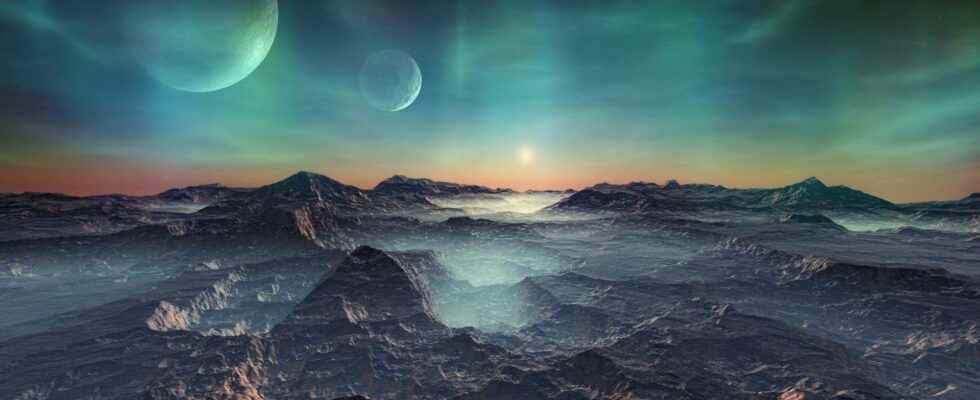Research continues. Tirelessly. But scientists still haven’t found any trace of life anywhere else in the Universe. For now, anyway. So a lot of hope is pinned on the Webb Space Telescope. It will in fact open up access to crucial information on the atmospheres of exoplanets. And researchers are now specifying precisely under what circumstances the detection of methane could be considered a convincing sign of life.
You will also be interested
[EN VIDÉO] The Interstellar Odyssey: what if we discovered an evolved form of extraterrestrial life? It is already possible to imagine scientifically, in broad outline, how an interstellar ship would be built, authorized by the laws of physics and technology. After 50 years of traveling towards a star in the near suburbs of the Sun, artificial intelligence, managing the mission of such a ship, could explore an exo-Earth with drones to make there not only the discovery of a life elsewhere but also of an intelligent life as shown by this extract from the documentary L’Odyssée interstellaire, broadcast on Arte.
Methane. With the chemical formula CH4. It’s a powerful greenhouse gas. Which we may soon have to hunt. Just as we are already chasing the carbon dioxide (CO2). To limit the global warming anthropogenic. But researchers at the University of California at Santa Cruz (United States), they propose to hunt methane in a completely different place than the atmosphere of our Earth and for a completely different reason. Because in the atmospheres of exoplanets, it could mark the presence of extraterrestrial life forms.
the methane as a biosignature — a sign that some form of life has passed through. The astronomers are particularly interested in it today. Because it could be detectable in the atmosphere of some exoplanets thanks to the James-Webb Space Telescope (JWST). But be careful! Methane, indeed, can also be emitted by non-biological processes.
While waiting for the first observations of the JWST, the researchers looked into the question. To follow their reasoning, it is good to remember that methane does not stay long in the atmosphere. In just a few years, it was destroyed by photochemical reactions. Thus, the only explanation for the detection of a quantity of methane in an atmosphere is the presence of a source which emits it more or less continuously.
Biosignature or not, the important thing is to avoid errors
And it is possible that non-biological sources emit a lot of methane as well. From volcanoesreactions that occur for example in mid-ocean ridge type environments, fireplaces hydrothermal vents or areas of subduction tectonics or impacts of comets orasteroids. But what researchers at the University of California suggest today is that these sources would then necessarily generate in parallel other observable clues betraying the origin of all this CH4. the degassing volcanoes, for example, would add both methane and carbon to the atmosphere of a rocky exoplanet. carbon monoxide (CO). What biological sources would not do.
According to astronomers, therefore, if methane can give an important clue, it remains only a simple piece of the puzzle of the extraterrestrial life. And the study published in the Proceedings of the National Academy of Sciences (United States) offers some guidelines to avoid “false positives”. To also prevent researchers from unfortunately missing out on a real biosignature.
For example, on a rocky planet in orbit around a star similar to our Sunmethane could begin to form a robust biosignature if said planet’s atmosphere also contains CO2 and if the CH4 is much more abundant than CO. But in matter of extraterrestrial atmospheres, there is still much to learn. And researchers at the University of California are calling for more work on the subject. Studies that could analyze even the most unusual mechanisms of non-biological methane production. In order to avoid as much as possible the errors of interpretation of the results which could be transmitted soon by the James Webb Space Telescope.
Interested in what you just read?
